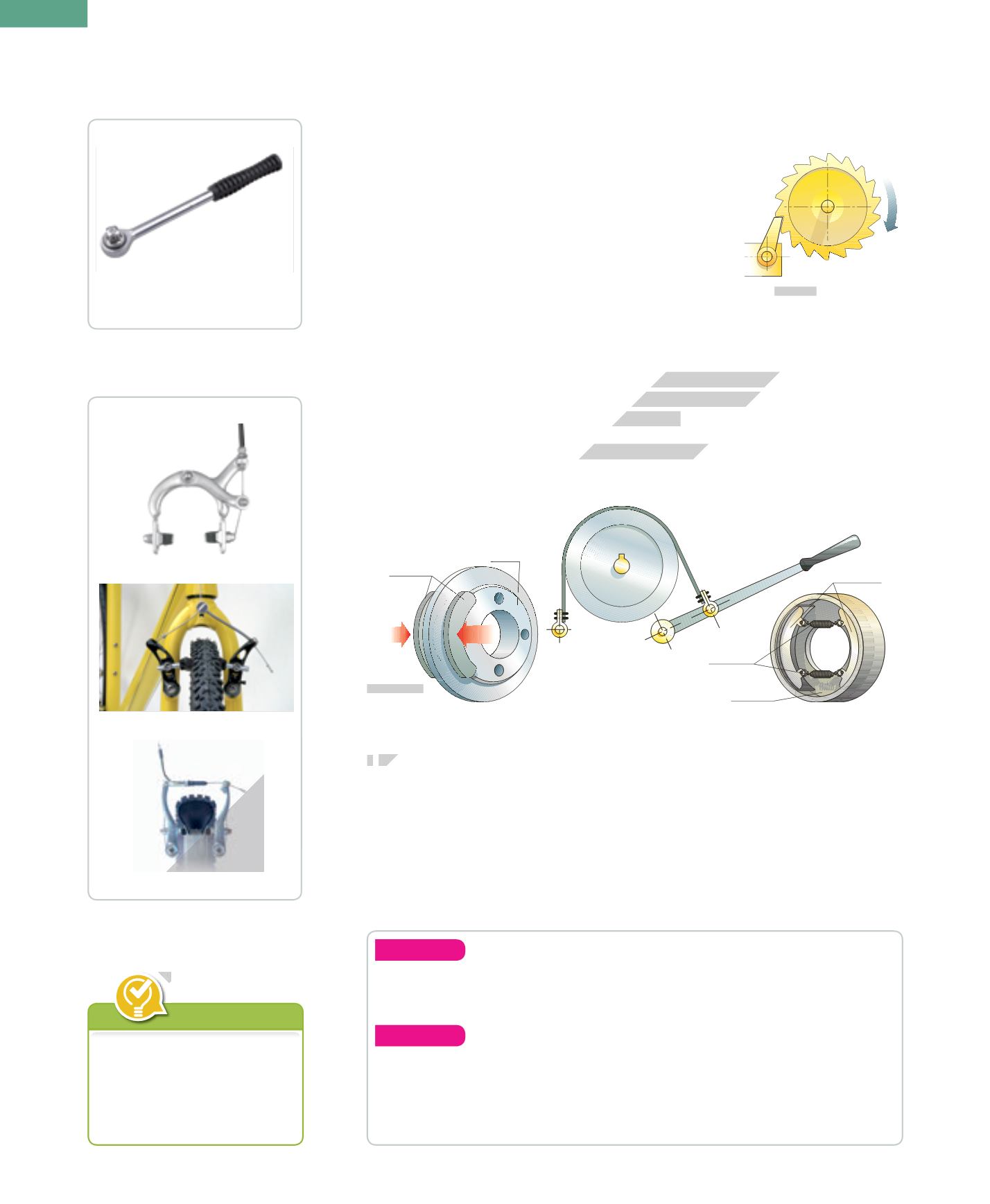
116
Analyse
33.
Study the photos of the bicycle brakes on this page. What class of
lever is each type of brake? What type of brake has your bicycle got?
Analyse
34.
Is the amount of force important when we activate a brake system?
What happens if we apply less force or more force?
35.
Find information about brake pads and shoes. What materials are used
to make them? What are the advantages of these materials?
5.
MECHANISMS THAT CONTROL MOTION
5.1.
Direction control: ratchets
A ratchet is mechanism that controls the direction of
motion. It allows motion in one direction, but not in the
other, as you can see in the picture.
Some ratchets are reversible, so they can work tighten
or loosen things in both directions.
Applications
:
we find ratchets in watches, cable-
tensors, and elevator brake systems.
5.2.
Speed reduction: brakes
Brakes
use friction to reduce speed. They are activated by some type of lever. The
lever transmits force to an output receptor, which puts pressure on the wheel. This
produces friction, which slows down the wheel.
There are various types of brake systems according to where the friction is
produced:
Reversible ratchet
This is a reversible ratchet. It can
tighten and loosen nuts in both
directions.
Bicycle brake systems
❚❚
Disc brakes
: a disc is connected to an axle. Brake pads apply pressure to the
disc.
❚❚
Band brakes
: a drum is connected to an axle. A flexible band applies pressure to
the outside of the drum. These brakes were used in carriages and they depended
on the strength of the driver.
❚❚
Drum brakes
: a drum is connected to the axle. A pair of brake shoes apply
pressure to the inside of the drum.
springs
drum
brake
shoes
pads
disc
disc brake
band brake
drum brake
Ratchet
Caliper brake
Cantilever brake
V-brake
❚
Ratchets are mechanisms
that control the direction of
motion.
❚
Brakes are mechanisms that
reduce the speed of motion.
Key concept
ADVANCE EDITION


